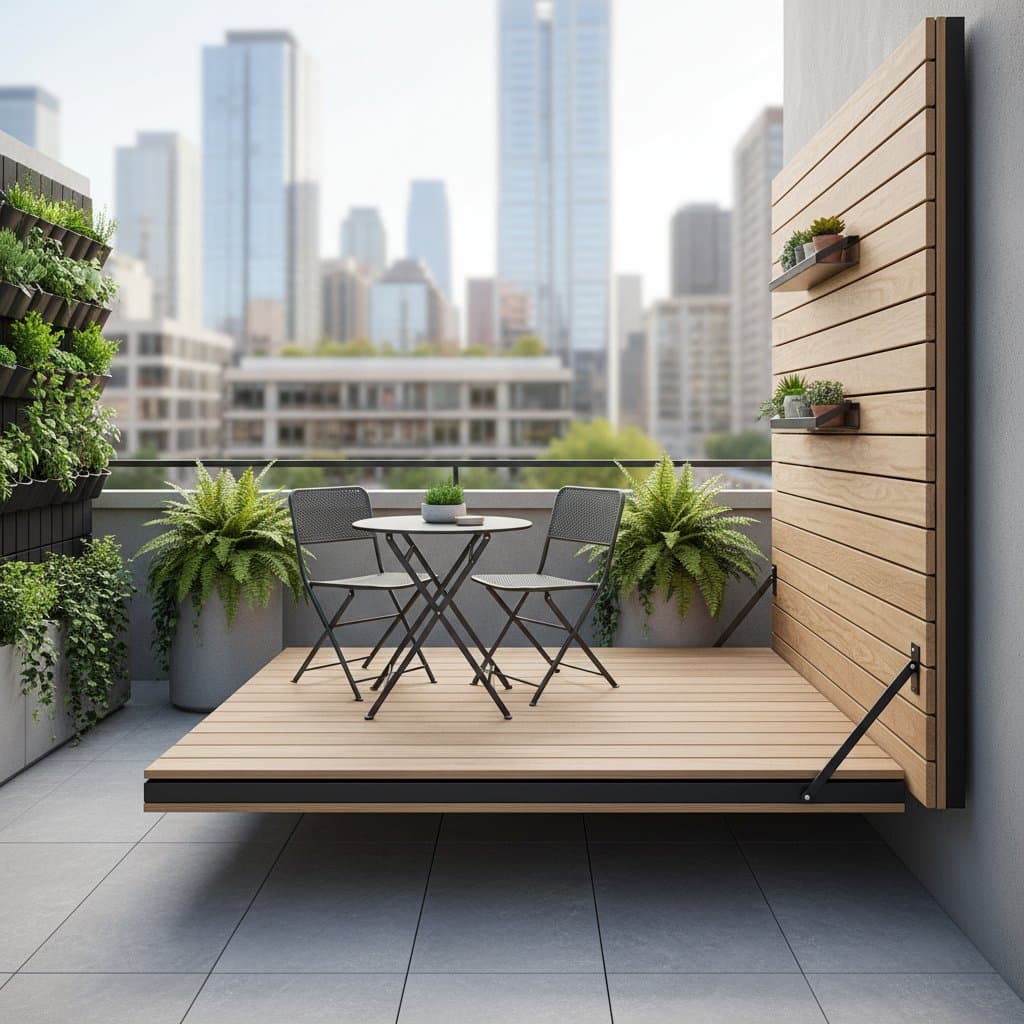The Secret to Balcony Seating and Gardening Combined
A small balcony presents a unique challenge. One desires a spot to enjoy morning coffee, yet space for vibrant greenery and a sense of seclusion remains essential. The objective proves straightforward: achieve comfort alongside botanical elements within limited square footage. Proper planning allows both elements to coexist without sacrificing area or tranquility.
This guide outlines methods to integrate balcony seating and gardening effectively. Readers discover optimal furniture selections, planter placements, and seasonal maintenance strategies.
Overview
A balcony design that incorporates seating and gardening succeeds through multifunctional use of space. Every inch contributes dual purposes. Chairs fold away neatly, planters mount vertically, and railings support herb containers. Layering lightweight furnishings with upward-growing elements yields a compact garden while preserving legroom.
Benefits extend beyond aesthetics. Greenery regulates temperature, dampens urban sounds, and infuses vitality into confined areas. Such a setup fosters a personal sanctuary requiring minimal ongoing investment in time or resources.
Tools and Materials
Essential items remain few and robust to initiate the project:
- Two folding chairs, each approximately 18 inches wide
- One compact folding table, measuring 20 to 24 inches in diameter
- Three to four planters in varying sizes, ranging from 8 to 14 inches in diameter
- Railing brackets or hanging hooks, each supporting at least 10 pounds
- Container soil mix, about one cubic foot per large pot
- Lightweight watering can with capacity under one gallon
- Weatherproof storage bin for soil and tools
Select materials resistant to humidity, including powder-coated metal or pressure-treated wood. Lightweight plastics or recycled resin prove suitable for elevated balconies.
Steps
Step 1: Map Your Layout
Position oneself on the balcony and record precise width and depth measurements. Designate a minimum 24-inch zone for seating and circulation. Position planters along perimeters or against walls to optimize pathways.
Step 2: Choose Compact Furniture
Opt for folding furniture that collapses flat for storage. Select chairs weighing under 10 pounds each to facilitate relocation during watering tasks. A round table accommodates narrow corners more effectively than a rectangular counterpart.
Step 3: Add Vertical Greenery
Incorporate wall-mounted planters or railing boxes with depths of 6 to 8 inches. Shallow-rooted options such as herbs, leafy greens like lettuce, and compact flowers thrive in these vessels. Suspend heavier pots closer to the floor level, where breezes exert less force.
Step 4: Group Plants by Light Requirements
Arrange sun-dependent species near the balcony's outer edge. Position shade-tolerant varieties adjacent to interior walls. Rotate containers biweekly to promote uniform development and prevent uneven exposure.
Step 5: Secure and Test Installations
Prior to filling with soil, inspect all brackets and hooks. Apply firm pressure to each fixture. Reinforce or substitute any unstable components. Prioritize safety, particularly in high-rise settings.
Step 6: Enhance Comfort
Introduce a diminutive outdoor rug composed of quick-drying materials. Employ slim cushions featuring detachable, washable covers. Reserve one area for a compact storage unit containing soil reserves, gardening gloves, and pruning shears.
Safety Tips
Eschew glass-topped tables in locations prone to intense sunlight or gusts. Verify railing load capacities prior to suspending planters. Administer watering judiciously, limiting to half a gallon per medium-sized pot, to minimize drippage onto lower levels.
Troubleshooting Common Issues
Should plants exhibit rapid drying, integrate self-watering reservoirs or line pots with coconut fiber for enhanced moisture retention. If the arrangement appears cluttered, eliminate one chair or adopt stackable stools. In cases of foul soil odor, decrease irrigation frequency and enhance ventilation via a portable fan or adjacent doorway.
Maintenance and Storage
Wipe down furniture monthly using mild soap and water solutions. Prune vegetation regularly, removing about one-third of new growth to maintain bushiness. Stow cushions and implements within a sealed, weather-resistant bin during idle periods.
As cooler weather approaches, collapse furniture and lean it against a wall. Maintain at least 2 inches of separation between stacked items to allow air flow and prevent mildew.
Budget and Time Considerations
Anticipate expenditures between $150 and $250 for furnishings and containers. Assembly requires two to three hours after gathering supplies.
Seasonal Reminders
Rejuvenate soil at the onset of each growth cycle. Alternate plant varieties to deter insect infestations. Inspect fittings for corrosion or slackness following severe storms.
When to Consult a Professional
Engage a handyman or facility maintenance service for drilling into concrete surfaces or securing substantial planters to railings. Inquire about structural weight thresholds before introducing oversized pots or heavy seating.
Building Your Balcony Oasis
Commence modestly with a single chair and two planters. Incorporate additional components gradually, guided by daily usage patterns. This iterative approach ensures a harmonious, enduring outdoor haven tailored to urban constraints.


